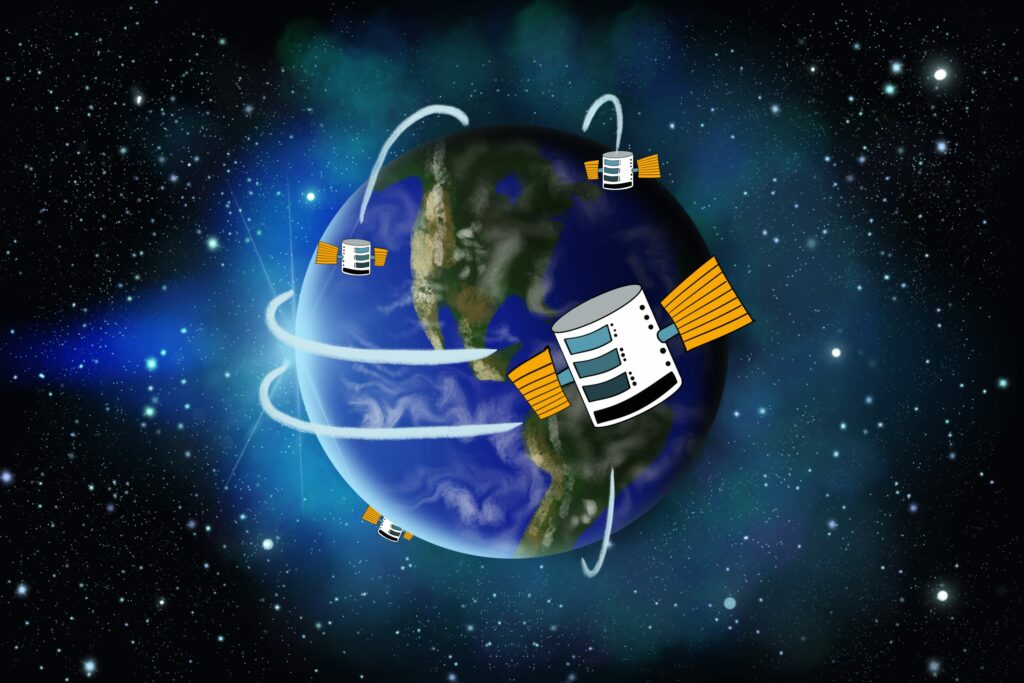By Geoffrey Cann
A brand new digital bludgeon whose nearly sole purpose is to beat up on the oil and gas industry, is about to be launched. As usual, this is both bad and good news.
The Methane Problem
For years, human produced industrial methane was overlooked as a meaningful contributor to climate change. Far more attention was paid to carbon dioxide (CO2) emissions from the coal industry (still the single largest source of CO2). But lately, methane has been singled out because it is considerably more potent as a green house gas (GHG), and humans generate a lot of it.
Methane holds heat in its molecular structure, to the tune of 84 times more than CO2 over a 20 year period. After a dozen years floating around in the atmosphere, it converts into CO2 and water, which are both GHGs, and CO2 takes thousands of years to break down. For these reasons, targeting avoidable methane emissions, such as those that are generated by our industrial processes, is reasonable climate policy for achieving quick climate benefits.
The global oil and gas industry is the single largest source of avoidable methane emissions, emitting 80 million tons per year through venting, flaring, and unintentional losses (fugitive emissions). These Scope 1 emissions represent the fastest pathway for the gas industry to meet pressing climate targets.

Measuring The Methane Problem
Getting a handle on the volume and location of methane emissions in oil and gas is complicated by many factors:
- The number of potential sources. There are millions of oil and gas wells in producing countries very widely spread out, both in operations and abandoned. Facilities for producing hydrocarbons feature plenty of tanks, pumps, compressors, valves, pipes, flanges, welds, and gauges, each of which is a potential source for leaks.
- Continuous operations. Once commissioned, these facilities tend to run round the clock so as to maximise the returns for the owner. Many of the emissions sources are intentional—pressurized gas provides pneumatic power to do things like trigger a valve to open or close, but discharges the gas into the atmosphere.
- High cost. The costs of detecting emissions are high. The technology for accurately doing so is expensive, consisting of such tools as optical gas imaging (infrared cameras), sound detectors (picking up the sound of escaping gas), sniffers, and lasers. The tools require highly skilled and specialized field labour to visit sites, a very costly mobilization expense. Dispatching a truck to a site armed with all this technology and expensive crews is so costly that it is carried out infrequently.
The consequences of this industrial construct is that emissions are likely to be under measured and under reported. Every few weeks, I read yet another report that makes that point (for examples, see here, here, and here).
Naturally, oil and gas companies are required by many regulators to follow leak detection and repair (LDAR) processes for various hydrocarbons, including liquids and gases. Those regulations are regularly tightened up.
At one time, I was convinced that flying drones (unmanned aerial vehicles or UAVs) adapted from the military would be the key technology to supplant the roving bands of skilled labour and their Ford F-150s. Collecting emissions data from such aerial assets offered a 10-15 times leverage effect over ground based crews.
Military-type drones can fly long distances with heavy camera payloads, allowing them to overfly many production assets in one go, replacing lots of windshield miles. But sadly, unmanned drones that fly this kind of distance (beyond line of sight) have to be flown by a certified (ie, expensive and scarce) pilot, and staffed with an equally capable support ground crew. Getting timely access to the data has proven to be challenging for the operators, relatively few of whom have enough assets in one basin to justify daily overflights of expensive drones.
In Situ, a Boeing subsidiary and one of the early leaders in applying military drone technology for industrial use, appears to have pivoted away from this application, to focus on security.
Satellite Technology Maturing
I’ve written several articles about how satellite technology has advanced dramatically in just a few years, spurred by the likes of Elon Musk and Jeff Bezos and their interest in transforming space flight.
Oil, Gas, and Satellites Are A Match Made In Heaven.Digital and Energy Geopolitics
Tesla And Its Odd New Interest In Fossil Fuel
At one time, satellite technology was the domain of governments and the military, requiring high cost earth stations and expensive handsets, and delivering such limited and costly bandwidth as to be only economic for select research institutions, arms of government, and very large private companies (including oil and gas).
That’s all about to change.
For the past six years, a consortium of investors and collaborators, including the Environmental Defense Fund, have been developing a new satellite called MethaneSat. It is a specialized piece of space gear whose sole purpose is to detect and measure methane emissions, from such sources as oil and gas and agriculture.
MethaneSat will be able to detect emissions at lower concentrations, from smaller sites, more frequently, and with greater accuracy than previous satellites.
And here’s the kicker. The data collected by MethaneSAT will be made publicly available, unlike many other data from satellite sources. Companies have already developed the algorithms to sift through the petabytes of survey data that such satellites produce (and like many algorithms, some will be in the public domain), so that the analysis will be swiftly available.
What Happens Next
Here’s a thought.
Let’s put an unlimited amount of free, reliable satellite data about near real-time methane emissions, processed with unlimited amounts of low cost cloud computing, using share-ware algorithms for this purpose, into the hands of those with wildly varying interests in oil and gas.
Regulators will soon grasp the extent to which the industry has been under-measuring and under-reporting based on current regulations. Past sanctions on operations that claimants argue were resolved may be found to be still in violation of the rules. The slow pace of regulatory approval to invest in abandoned high emissions wells will come under very significant pressure.
Politicians will revisit the carbon taxes levied on the industry, which will be provably below where they should be. Some tax authorities will be motivated to go after the under reported value. Energy prices should certainly rise to reflect the untaxed emissions, which in turn will fall unevenly on society, and disproportionally on those least able to pay.
Activists will carpet-bomb the industry with lawsuits for misrepresenting their emissions profiles. Smaller operators who may have thought themselves beyond scrutiny because of their isolation, their scale, or their relative impacts, will find they have nowhere to hide. Larger operators, who arguably have the resources to get ahead of methane, will be held to account in the market of public opinion.
The capital markets will understand their true exposure to methane emissions enabled by their continued financing of oil and gas activities. Minority and dissident shareholders who are working to press for changes will be emboldened. Company plans to accelerate investment in LDAR and methane abatement will finally get well-deserved attention. Stock prices that take a hit because of misrepresented methane exposure will attract lawsuits.
Communities nearby to oil and gas infrastructure will zero in immediately on the wells and facilities in their neighborhoods. Local health and safety concerns that might have in the past been dismissed because of inaccurate data will demand immediate mitigation response.
State actor competitors (from Russia perhaps) will arm their troll farms with this methane data and stoke negative public opinion in the west.
And yes, school children throughout the west will be playing with this data too.
What Should Oil and Gas Companies Do?
You could just wait and hope for the best. After all, the satellite has yet to be launched (although it’s expected this year), so there’s some risk that it will fail. But satellite launches are now so routine that they’re not even news. Probably not the wisest bet.
- Prepare your PR engine. This is going to get ugly fast. You need to get your messaging right so that you own the narrative, rather than letting everyone else write your narrative for you.
- Dust off your methane abatement plan. If you don’t have one, get one. Get it in high gear.
- Step up your LDAR program. The good news is that you can exploit this free data too, once it’s available, to help you target the most egregious offenders in your portfolio.
- Get creative. The true cost of abatement for some of your assets will be well in excess of the value they produce. Now is the time to plug them and turn them into carbon credits.
Conclusions
This powerful new capability from space is going to be an absolute nightmare for the unprepared, but in the long run, we’ll all benefit. At least you have a few more months to get ready.
Artwork is by Geoffrey Cann, and cranked out on an iPad using Procreate.
Share This:




